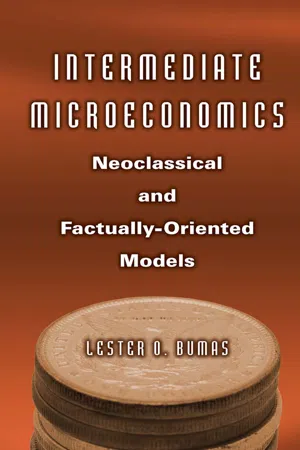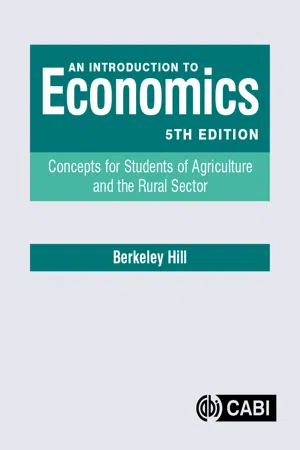Economics
Supply and Demand Forex
Supply and demand in forex refers to the relationship between the availability of a currency (supply) and the desire for that currency (demand) in the foreign exchange market. When demand for a currency is high and supply is limited, its value increases, and vice versa. Understanding supply and demand dynamics is crucial for analyzing and predicting currency price movements in the forex market.
Written by Perlego with AI-assistance
Related key terms
3 Key excerpts on "Supply and Demand Forex"
- eBook - ePub
The Industrial System (Routledge Revivals)
An Inquiry into Earned and Unearned Income
- J. Hobson(Author)
- 2013(Publication Date)
- Routledge(Publisher)
Similarly with demand. If we are to place it in true relation with this supply, demand must mean either the quantity of goods which buyers are willing and able to buy at the current price, or the quantity of money buyers are able and willing to pay for goods at the current price. If, however, taking these meanings of the terms, we turn to the mechanism of the market, we find them defective in that they furnish a merely statical setting to a dynamic problem. Supply and demand, thus conceived, are stationary amounts. Now price-change is a process, and in order to understand this process, what we have to estimate is the rate at which the stock of goods is increased and depleted—a flow and not a fund. But if we conceive supply and demand as quantities of goods (or money) regarded at a particular time, we conceive them as funds. In order to study price-change properly, we must express supply and demand as flows, i.e. measure them as processes taking place in time. Consistently with this purpose, supply may mean the total stock offered for sale at a price during any given time, and demand may mean quantity of purchases at a price within a given time, or quantity of money expended at a price within a given time. But it will be more convenient to define the terms more narrowly, confining supply to the rate of increase of stock: demand to the rate of withdrawal from stock (or the rate of payment of money withdrawing from stock). Thus alone do we rightly come to regard supply and demand as processes or ‘flows’ and the supply and demand with which we concern ourselves will be equivalent to the rate of production and of consumption. 1 Where goods flow out of a stock at the same rate as they flow in, the price remains firm, and demand and supply will be said to be equilibrated; where the inflow is faster than the outflow, prices fall, and supply will be said to exceed demand; where the outflow is faster, prices rise and demand exceeds supply - eBook - ePub
Intermediate Microeconomics
Neoclassical and Factually-oriented Models
- Lester O. Bumas(Author)
- 2015(Publication Date)
- Routledge(Publisher)
CHAPTER TWOFundamentals of Supply and DemandThere is an old aphorism, “Teach a parrot the words supply and demand and it becomes an economist.” There is much truth in this statement since work in economics often involves analysis of supply or demand or both.In this chapter, the rationale of the breakdown into supply and demand is discussed first. This is followed by a presentation of demand-related and then supply-related matters. A reasonable degree of understanding will allow readers to rise to heights above parrots—at least in the eyes of economists. The interaction of supply and demand can be found in Chapter 3 .The Breakdown into Supply and Demand
Adam Smith noted that economic transactions are between buyers and sellers “whose interests are by no means the same.” Buyers prefer lower and sellers higher prices. The reactions of buyers and sellers to price increases and decreases also differ. At a higher price buyers tend to purchase less while firms have the incentive to produce more.Some economic variables affect buyers and others affect producers. An increase in income allows buyers to purchase more and better products—but has no direct effect on the costs of their production and supply. Technological progress may dramatically change the way a product is made and its cost of production and supply, but that will not change the demand for it. A related matter is that demand and supply are generally, but not always, independent of each other. This creates the need to analyze each separately and in isolation from the other. There are few things as disheartening to instructors than finding students asked to confront demand-side issues slipping their analysis into the realm of supply and vice versa. - eBook - ePub
An Introduction to Economics
Concepts for Students of Agriculture and the Rural Sector
- Berkeley Hill(Author)
- 2021(Publication Date)
- CAB International(Publisher)
3 Demand and Supply: the Price Mechanism in a Market EconomyIntroductionThe study of the demand and supply of goods and services, and the way they interact, forms a fundamental part of economics. Indeed, a surprisingly high proportion of economic problems we come across in everyday life can be explained, although perhaps not solved, by a careful examination of the demand and supply of goods or services. It has even been suggested that a parrot could be turned into a passable economist simply by teaching it to say the words ‘demand and supply’ in reply to all questions.By way of introduction to this important area of study let us take an example from agriculture. At various times of the year some farmers want to buy barley while others are willing to sell barley – a demand and a supply both exist. Transactions occur at markets where buyers and sellers can meet each other. These used to be physical places but nowadays this could equally well be Internet websites. Let us imagine that we can select one market on one day (say, in early December) and have the power to ask as many questions as we like. Furthermore, let us imagine that we can dictate what the price of barley is to be.If we take all those who wish to buy barley and tell them that the price will be £100/t on that day – assume this is a high price for the particular season – very few farmers will wish to buy any and the quantity sold will be small. If we say that the price will be £90/t, more buyers will be interested. As the price is lowered, increasing interest will be shown – more farmers will wish to buy and each will tend to buy more. If we make a table of the quantity of barley we could sell at various prices we end up with a demand schedule .If we moved on to suppliers of barley we would find that at a low price the quantity which they would be prepared to sell would be small. But if we offered a higher figure the quantities offered would increase – more sellers would want to sell and each would want to sell a greater quantity. Again we could draw up a table or schedule of prices and quantities of barley which suppliers would be prepared to supply at these prices.
Index pages curate the most relevant extracts from our library of academic textbooks. They’ve been created using an in-house natural language model (NLM), each adding context and meaning to key research topics.


